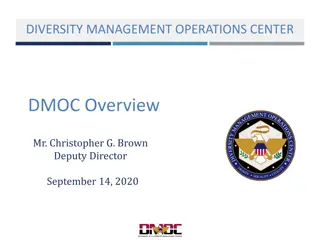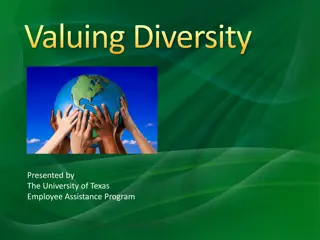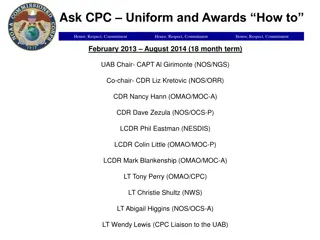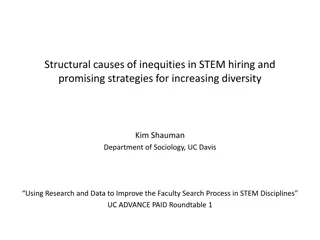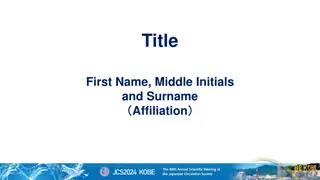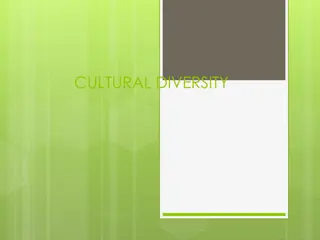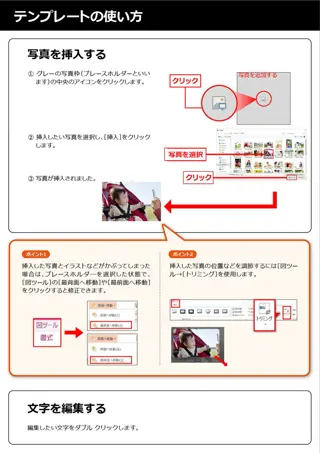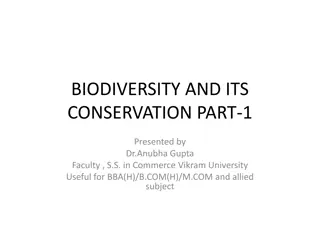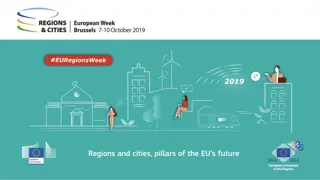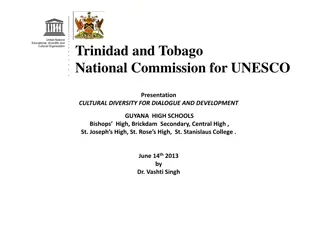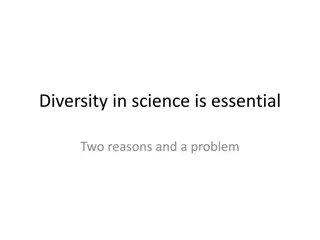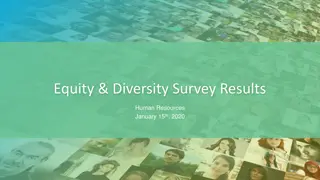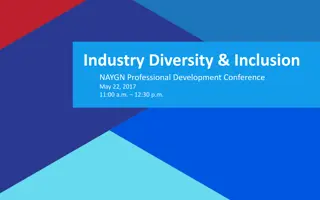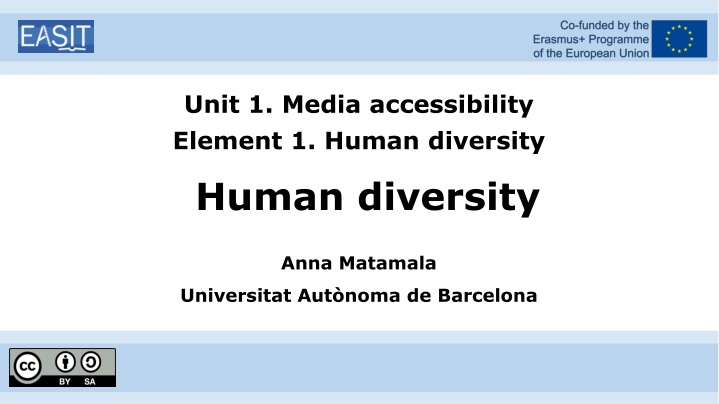
Human Diversity and Inclusion in Media Accessibility
Explore the concepts of human diversity in media accessibility, including factors like ethnicity, culture, gender, and more. Understand the importance of diversity, ways to address stereotypes and prejudice, and the significance of the Universal Declaration of Human Rights and UN Convention on the Rights of Persons with Disabilities.
Download Presentation

Please find below an Image/Link to download the presentation.
The content on the website is provided AS IS for your information and personal use only. It may not be sold, licensed, or shared on other websites without obtaining consent from the author. If you encounter any issues during the download, it is possible that the publisher has removed the file from their server.
You are allowed to download the files provided on this website for personal or commercial use, subject to the condition that they are used lawfully. All files are the property of their respective owners.
The content on the website is provided AS IS for your information and personal use only. It may not be sold, licensed, or shared on other websites without obtaining consent from the author.
E N D
Presentation Transcript
Unit 1. Media accessibility Element 1. Human diversity Human diversity Anna Matamala Universitat Aut noma de Barcelona
Overview Concepts related to human diversity.
Human diversity Factors: Ethnicity Culture Marital status Physical and mental capabilities Gender Political beliefs First language Religious beliefs Sexual orientation Age Socio-economic status National origin Not fixed categories.
Diversity Otaye-Ebede, Lilian & Akobo, Loyila. (2020) Social and psychological perspectives on diversity . In J. Syed & M. Ozbilgin (Eds.), Managing diversity and inclusion: An international perspective (2nd ed.). SAGE.
Definition of diversity a variety of visible and non-visible differences [ ] inherent amongst individuals and groups , but more emphasis given to social groups that have been historically subjected to discrimination .
Stereotypes Biased generalisations about a social group.
Prejudice Negative emotion towards a social group.
Unconscious bias Favouring those who share similar values over others who don t without being aware of it.
Discrimination Treating people less favourably because they are linked to a particular group.
Universal Declaration of Humans Rights Everyone is entitled to all the rights and freedoms. No distinction shall be made.
UN Convention on the Rights of Persons with Disabilities All discrimination on the basis of disability shall be prohibited. Persons with disabilities are guaranteed equal and effective legal protection against discrimination.
Pictures Source: pixabay.com, publicdomainvectors.org License: Pixabay License, CC0
Anna Matamala anna.matamala@uab.cat
Acknowledgement The project EASIT has received funding from the European Commission under the Erasmus+ Strategic Partnerships for Higher Education programme, grant agreement 2018-1- ES01-KA203-05275.
Disclaimer The European Commission support for the production of this publication does not constitute an endorsement of the contents, which reflect the views only of the authors, and the Commission cannot be held responsible for any use which may be made of the information contained therein.
EASIT EASIT (Easy Access for Social Inclusion Training) Logo pagines.uab.cat/easit

